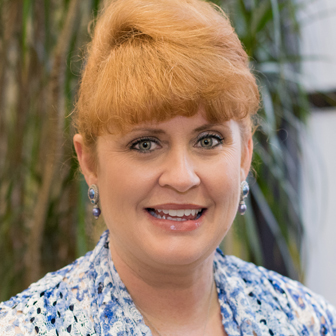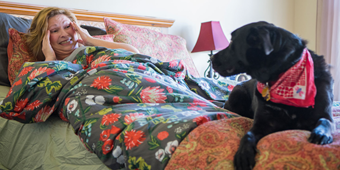Does Winter Gloom Bring You Down?

Answer a few questions and we'll provide you with a list of primary care providers that best fit your needs.
We typically associate the dark days of winter with the flu, the common cold, and other annoying viruses.
But shorter, colder days also bring about another common health issue — seasonal affective disorder (SAD). SAD is “essentially a low-grade depression, brought on by the change of seasons,” explains Joseph Allen, MD. “It’s very common going from summer or fall into the winter months.”
Scientists don’t know exactly why winter days cause SAD, but they think it has something to do with serotonin, a neurotransmitter that affects our moods. Serotonin may increase in some people during the winter. They think that lack of vitamin D, which comes from sun exposure, also plays a role. The hormone melatonin also may be a factor. When our eyes experience sunlight, the melatonin in our bodies decreases, helping us wake up in the morning. When there is no sunlight, our melatonin levels rise, making us sleepy or lethargic. Decreased sunlight in the winter can mess with this sleep/wake cycle, known as the “circadian rhythm.”
SAD differs from typical depression. “Symptoms of depression can occur any time and seem to come out of nowhere,” says Beth Esposito, MS, LPCC-S, LSW. “But if your depression starts consistently every year during the fall and winter, and begins to lift in the spring, it’s probably a lighting issue.”
According to the National Alliance for Mental Illness (NAMI), if you start to experience the following symptoms in the fall or winter, you might have SAD, and you should seek medical advice:
- Sleeping too much or too little
- Change in appetite
- A loss of interest in things that you usually enjoy
- Decreased interest in sex
- Lethargy
- Feelings of hopelessness
- Withdrawing from social activities
- Carbohydrate craving
- Weight gain
- In rare cases, thoughts of suicide
Treatment Starts With Light
Many people with SAD respond well to treatment with a light box. These boxes artificially simulate natural sunlight, with a brightness that’s more intense than ordinary indoor light. Research has shown them to be as effective as antidepressants in some people. Light therapy begins to work within a few days to a few weeks, often taking effect earlier than antidepressants.
SAD is “essentially a low-grade depression, brought on by the change of seasons,” explains Joseph Allen, MD.
Esposito recommends buying a light box that has a level of at least 10,000 lux (a measurement of light intensity). She also cautions that you read the packaging label carefully; there are other kinds of light boxes on the market designed to treat skin disorders, which require a higher UV level than SAD. Make sure your box is designed specifically to address mood or sleep/wake issues.
The National Institute of Mental Health (NIMH) and Esposito also recommend:
- Using the box 20 to 60 minutes daily, first thing in the morning
- Placing the light at eye level so that it shines directly on your face
- Facing the light while reading or working, and looking at it directly from time to time
Other Solutions
If a light box alone doesn’t help, talk to your health care provider about other options, like therapy and/or an antidepressant, Esposito says. She also suggests:
- Getting adequate sleep. This includes sleeping in your bed instead of the couch, and making sure everything — lights, TV, cell phone — is turned completely off. Even the smallest bit of light can disrupt the wake/sleep cycle, Esposito warns.
- Getting as much natural light as possible. Open blinds and curtains in every room, and allow as much light in as possible, from the time you arise until bedtime. If you work in a windowless office, consider having a light box at your desk.
- Winding down at least 30 minutes before going to bed. Put your work and electronics away, and relax quietly before hitting the sack.
- Keeping consistent sleep hours from day to day
- Exercise! A good workout can lift your mood AND help you sleep more soundly.
The good news is, most cases of SAD start to ease up with the onset of spring and longer days. In the meantime, good medical support, good sleep and health practices, and exposure to as much light as possible should get you through winter’s gloom.
Answer a few questions and we'll provide you with a list of primary care providers that best fit your needs.
Source: National Alliance on Mental Illness; National Institutes of Health; Joseph Allen, MD, Family Medicine of Vandalia; Beth Esposito, MS, LPCC-S, LSW, Samaritan Behavioral Health






